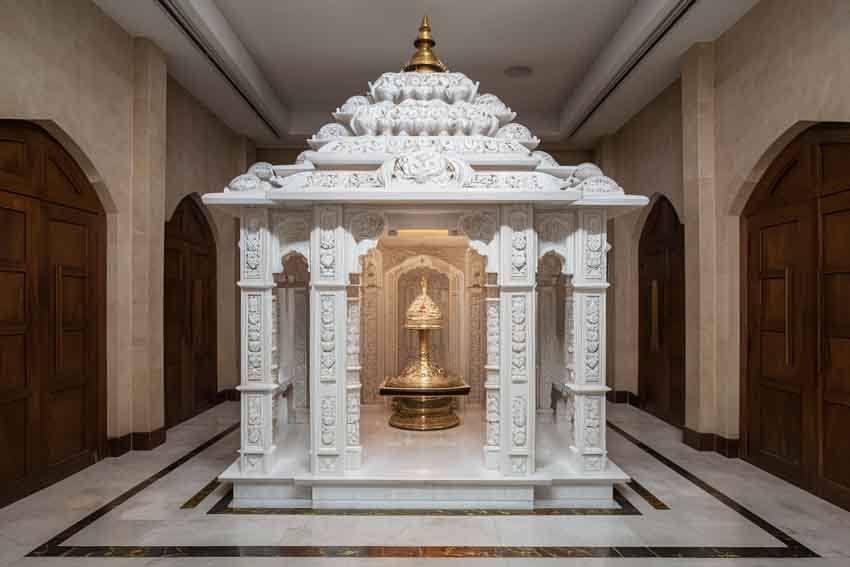India has long been celebrated for its architectural marvels, many of which owe their timeless beauty to the elegance and durability of natural stone. Among the most revered materials in sacred construction is marble—a stone deeply rooted in Indian tradition and spiritual design. From the iconic Taj Mahal to intricately crafted Jain temples, marble symbolizes purity, divinity, and permanence. When it comes to building temples that reflect both sanctity and artistry, the selection of the right marble becomes more than just a design decision—it is a cultural imperative. One name known for quality and consistency in this domain is Galaxy Exports Udaipur, a company that has become synonymous with excellence in marble craftsmanship.
A prime reason behind marble’s popularity in temple construction lies in its aesthetic versatility. While its classic white hue signifies peace and spiritual purity, its polished surface enhances the ambiance of temple spaces, reflecting light and invoking a sense of serenity. The company, being a trusted marble supplier in India, offers an extensive range of temple-grade marbles that suit both traditional and contemporary spiritual architecture.
Makrana Marble: The Heritage Stone
Makrana marble is perhaps the most iconic and time-tested marble variety in India. Quarried in the Nagaur district of Rajasthan, it has a legacy rooted in some of the country’s most prominent historical structures. Known for its milky whiteness, fine grain, and longevity, Makrana marble is ideal for temples that aspire to timelessness. It does not lose its color or shine even after decades, making it a preferred choice for monumental temple projects. Architects and temple designers often recommend it for sanctums, domes, and idol platforms due to its high calcium content and natural luster.
What sets Makrana apart is not just its strength, but also its association with divinity. The stone has been used in constructing some of India’s holiest shrines, including the Dilwara Temples in Mount Abu. It resonates with spiritual significance and has become a staple in designing spaces meant for prayer, meditation, and reflection.
White Sangemarmar: A Contemporary Spiritual Choice
While Makrana marble enjoys heritage status, White Sangemarmar has emerged as a contemporary favorite. This marble, also known as Sangemarmar Pathar, is mined from the quarries of Madhya Pradesh and is widely used in modern temple architecture. It is slightly softer than Makrana, which makes it easier to carve intricate designs, an essential feature for ornate temples.
White Sangemarmar offers a brilliant shine and a smoother finish, ideal for achieving a polished look in temple interiors. Its affordability also makes it a viable choice for mid-sized temples or home-based shrines. Temple builders often use it in combination with colored stones to create contrast and highlight key religious motifs. This blend of tradition and modernity is what makes White Sangemarmar increasingly popular across India and beyond.
The Rise of Designer Marbles for Temples
Modern spiritual architecture has seen a rising interest in unique and luxurious marble types that can elevate the visual appeal of temples. While traditional marbles like Makrana and Sangemarmar continue to dominate, the demand for distinctive stones such as Hazel Bruno marble in India has grown steadily. Hazel Bruno, with its elegant veining and subtle shades, brings a contemporary sophistication to temple décor.
This marble is especially preferred for temple flooring, wall cladding, and decorative columns. Its natural hues offer a warm backdrop that contrasts beautifully with white idols and metallic embellishments. The calm earth tones of Hazel Bruno are also seen to promote a grounded and welcoming atmosphere, ideal for spiritual immersion.
Premium White Choices: Tampa White Marble
Among the latest premium additions to temple architecture is Tampa White Marble in India, a marble type known for its uniform texture and pure white tone. Its minimal veining makes it perfect for temples that aim to project an uncluttered and serene look. Tampa White is increasingly used in temples that blend spirituality with modern design principles.
Thanks to its excellent polish and durability, Tampa White performs well in both interior sanctums and exterior façades. It retains its sheen under harsh lighting and weather conditions, making it a long-term investment for temples built to withstand time. Many temple designers pair it with semi-precious inlays and golden elements to accentuate sacred spaces.
Selecting the Right Marble for Your Temple
Choosing marble for temple construction goes beyond appearance—it involves assessing factors such as location, spiritual intent, foot traffic, and maintenance capabilities. For example, Makrana marble is perfect for heritage-style temples where longevity and tradition are paramount. In contrast, White Sangemarmar works well for smaller shrines or modern constructions that prioritize carvability and cost-efficiency.
Designer marbles like Hazel Bruno or Tampa White allow for creative expression while maintaining sanctity. Whether you’re designing a private home temple or overseeing the construction of a large public shrine, it’s essential to consult experts with proven experience in temple marble selection and installation. That’s where Galaxy Exports Udaipur steps in—with years of hands-on experience, extensive quarry networks, and a portfolio that spans international projects, they bring both tradition and innovation to every stone they offer.
Final Thoughts
From the age-old charm of Makrana to the refined elegance of Tampa White and Hazel Bruno, India’s temple marbles reflect its spiritual and artistic legacy. Each variety serves a unique purpose in temple architecture, catering to different design visions while staying rooted in sanctity. With the growing appreciation for aesthetic spirituality, the demand for quality marble in temple construction is only set to rise. By selecting the right material, sourced from reputed suppliers like Galaxy Exports Udaipur, builders can ensure that their temples remain symbols of faith, beauty, and endurance for generations to come.





